Tips for Teaching Persuasive Writing for Special Ed Students
- Categories : Inclusion strategies for mainstreamed classrooms
- Tags : Special ed information for teachers & parents

Modifying the Persuasive Essay
In modifying the persuasive essay for students with learning disabilities, start with having students use their reflective journals to create free-flowing ideas on possible topic areas. Teachers can narrow down topic areas to “Solving Conflicts Over the I-Pod” or “Whether to Buy the Teva Shoes or Not.” Once students have decided on a topic area, then you can teach them how to develop a thesis and scaffold the persuasive essay into doable chunks of learning that include the following:
- Title that supports the topic idea
- Supporting paragraphs that include chunks of information with cited facts and examples that transition from introduction to conclusion. There could be from 1-4 supporting paragraphs that develop the topic idea.
- Conclusion summarizes the topic idea and brings the essay full circle.
Modification the chunks of the essay components can include having students follow the sections below in creating an informative persuasive essay.
Topic Idea and Title
Introduce and explain what a persuasive is so that students have an understanding that the intent of a persuasion is to convince the reader of a point of view. Have students think about topic ideas that interest them and start with one persuasive thought such as, “ I persuaded him that ice cream is better than frozen yogurt because ice cream creates a more positive state of being after eating than frozen yogurt .” There is a certain fun factor in the thought and students with learning disabilities can have fun creating a persuasive argument with a defined topic idea and support that topic idea with a title that stands out. Modify this chunk by having students start with one topic idea and build from that point if indicated by skill level and ability.
The title for the above topic idea could be “ Ice Cream vs. Frozen Yogurt-You be the Judge ” or “ Ice Cream - The Better Dessert Alternative .” Have students brainstorm titles in their journals individually and then have them work in groups of 3-4 to compare title ideas and support each other’s topic idea and titles. Students with learning disabilities can create one or two title ideas as compared to five-seven for their peers. The idea is to keep students focused and invested on generating the first chunk of information needed for the bigger goal of writing a persuasive essay.
Supporting Paragraphs and Conclusion
The body of the essay includes supporting paragraphs that include facts and research citations that provide relevant connection to the topic idea. In modifying this chunk of learning, the teacher can can have students write 1-2 smaller paragraphs with 1-2 facts and research citations. By keeping the paragraphs doable, students will engage in creating smaller chunks of writing and learn about the process of constructing a persuasive essay.
For example, a modified supporting paragraph for the above topic idea on ice cream could look like the following:
Ice cream is better than frozen yogurt because it fills you up quicker. It does this because the cream is heavier and sits in your stomach longer. Ice cream is also sweet and makes you happy except when it’s gone and then you’re sad.
Students are able to write in their own style and on their skill level. Incorporating technology by having students use the computer and a word.doc software program with spellcheck and a “save as” mode will allow students to come back and edit their essay draft and add the conclusion before editing the final essay.
The conclusion restates the topic idea and brings all components of the persuasive essay full circle. Students with learning disabilities can create a two sentence conclusion and be proud of a finished product that contains all components of a persuasive essay that effectively persuades.
Essay - Authentic Author Content
How to Teach Opinion Writing in Special Education
- April 19, 2022
Home self contained, special education teacher Blog self contained, special education teacher How to Teach Opinion Writing in Special Education
I always found it tricky to truly know how to teach opinion writing in special education. My students needs are SO different and diverse, and reaching every learner seemed like a seriously daunting task.
Who’s with me?
As a result of this, over the years, I’ve created a bit of a system to teach different kinds of writing, that includes a progression to reach every student. In this blog, I will outline how I took my students from reluctant writers, to THRIVING writers!
Here’s what I did..
If students are at the beginning stages, I’d start with beginner level one and move up as the days continue. If they baseline at a higher level we start at that level.
For instance, here’s how I teach opinion writing in special education:
1- Baseline Data
I take some baseline data and give students the baseline data sheet, or a blank sheet to see where they may be at in the continuum.
2- Start at the Appropriate Level (students love to share their opinions)
How to teach opinion writing - use differentiated lessons.
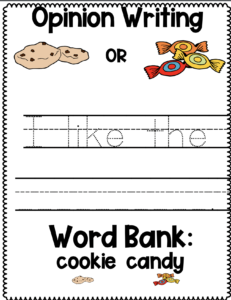
3- Continue as the Package Says
it’s great to see students continue to progress and work through the activities in the various levels. You can also track progress, and write individual notes under the student observation section of this package. Here are some examples below of the differentiated package.
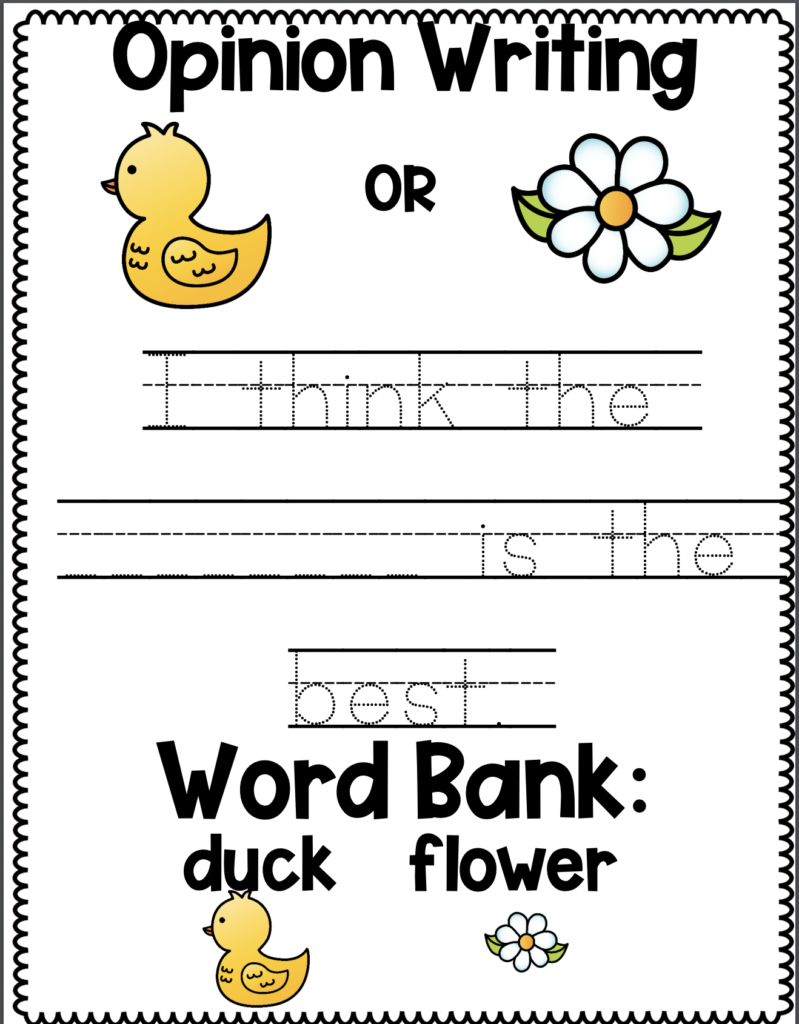
4- Watch your students SOAR
If you want a step by step package to support your learners through opinion writing I encourage you to check out my shop! I have the entire package for under $3.00 – woot woot!
I try to keep my products EXTREMELY affordable so ALL teachers, parents and more can work with their students in a systematic way!
There you have it! In short, this is how to teach opinion writing in special education!
I hope this process has made it a bit clearer for you, and as a result, allows your students to develop more independence with their writing.
MORE BLOG POSTS
Still hungry? Here’s more
Privacy overview.

The Ultimate Guide to Opinion Writing for Students and Teachers
The Importance of Opinion Writing
Encouraging our students to express their personal opinions is an important part of the learning process; healthy even. To do this effectively, it is equally important that we help them acquire the necessary skills to express these opinions in a reasoned and coherent manner when teaching opinion writing.
Writing is one of the best possible vehicles for our students not only to express their opinions but to explore the strength and validity of those opinions.
CONSIDERATIONS BEFORE WRITING AN OPINION ESSAY
For our students to competently express their opinions in writing, they must first understand the specific requirements of the type of question they are answering. Of course, there are many types of questions and fun opinion writing prompts that are geared towards coaxing personal opinions from a student and each will require its own specific tailored response.
It’s clear that personal opinions permeate a wide range of genres and media. We find opinions everywhere from hotel reviews and infomercials to political commentary and newspaper editorials. But, despite the diversity of forms opinion writing can take, we can helpfully identify some general criteria that will assist our students in navigating the challenge of most opinion writing prompts and questions.
Let’s take a look at some of these criteria in more detail.
A COMPLETE UNIT FOR TEACHING OPINION WRITING

Teach your students to write EXCELLENT PERSUASIVE ESSAYS and master INFLUENTIAL WRITING SKILLS using PROVEN TEACHING STRATEGIES with this 140-PAGE UNIT.
ALL RESOURCES AND ASSESSMENT TOOLS INCLUDED – NO PREP REQUIRED.
30+ 5-star Ratings ⭐⭐⭐⭐⭐
OPINION WRITING CRITERIA TO ADDRESS
1. identify the audience: speak clearly.
Writing is about language and language is about communication; students should understand that we do not write in a vacuum. The purpose of an essay, letter, or any other form of writing we care to name, is ultimately to be read.
This means that it is essential that consideration be given to the character of the intended audience. Also, remind students that when they are writing, the reader is not privy to the inner workings of the writer’s mind. They must make their thoughts explicit in their writing and ensure that these thoughts are expressed in a coherent manner.
The student writer should always avoid making the assumption that the reader knows things that are not expressed explicitly in the writing.
2. Take a Stance: Stand Firm
From the very outset, the student should state their position boldly. More than that, they must stand firm in that opinion throughout the entirety of the piece.
Opinion writing is not about communicating a series of pros and cons or discussing at length the various related advantages and disadvantages, the place for that is not here. The opinion piece should open with a bold statement of opinion that is clearly expressed, and that opinion should be held unwaveringly and reinforced constantly throughout the text.
As with many other writing genres , employing a hook to grab the reader’s attention is good practice too. This hook can take the form of a quotation, an anecdote, a statistic, or even a joke. Whatever form the hook takes, it should reveal the writer’s take on things too.
To summarize, whatever the topic and however the student opens their opinion piece, they should ensure they express their opinion immediately and coherently. There should be no doubt in the reader’s mind as to where the student-writer stands on the issue.
3. Choose Appropriate Evidence: Back It Up
There is no doubt that subjectivity is an important aspect of opinion writing in general. That does not mean, however, that opinions do not need to be substantiated.
Your students will need to recognize that each and every statement of opinion will need to be supported by appropriate evidence. This will also help students to develop their critical reading skills as they will be able to better recognize when unsubstantiated claims are made by other writers. Opinions backed up with evidence help lead the reader along the writer’s pathways of thought; making the writing more convincing as a whole.
This evidence can take a wide variety of forms, ranging from personal anecdotes and quotations to statistics and references to scientific studies. Students should also always be encouraged to choose evidence that is broadly suited to the subject they are writing about.
4. Draw Conclusions: Wrap It Up
In the well-organized piece of opinion writing, as with many other types of extended writing, the writing should be structured in paragraphs. Paragraphs are essential elements of good writing organization.
Generally speaking, an opening paragraph gives way to body paragraphs. These body paragraphs, or development paragraphs, describe in more detail the ideas laid out in the initial opening paragraph by further exploring, explaining, and providing supporting evidence for each point.
The final concluding paragraph serves to close the circle by restating the central points in a closing endeavor to drive home the writer’s opinion.
5. A Word on Words
Writing is an art form. Attention to detail is important. But, it isn’t only important to look at the big picture things like structure, students should be encouraged to shift their focus from the text level down to the word and sentence levels too. In an opinion piece, strong, forceful verbs should be the order of the day. There is little space for passive forms when engaged in the construction of convincing arguments.
Things should be kept interesting too. Students should vary their sentence structures grammatically and in length. Variety is key.
As always in writing, editing should be emphasized. The editing process polishes the well-wrought opinion piece by putting the final gloss on the student’s work.
The OREO Opinion Writing Process Explained
As with all genres, there’s a lot to remember here and acronyms are a helpful way to commit these important things to memory. Luckily, few things can be easier to commit to memory than the name of a delicious cookie:
O – Opinion
R – Reasons
E – Evidence or Examples
O – Opinion (restated)
This memorable acronym will help students remember some of the main elements of opinion writing as outlined above. But, sometimes the hardest thing for students to do is to get the writing ball rolling.

Opinionated Sentence Starters
Sentence starters provide students with great ways to kick-start their writing. Reminding students of simple ways of introducing opinion sentences can be helpful. Here are a few for ‘starters’ for starters:
● In my opinion…
● I think that…
● It seems to me that…
● It appears to me…
● I feel that…
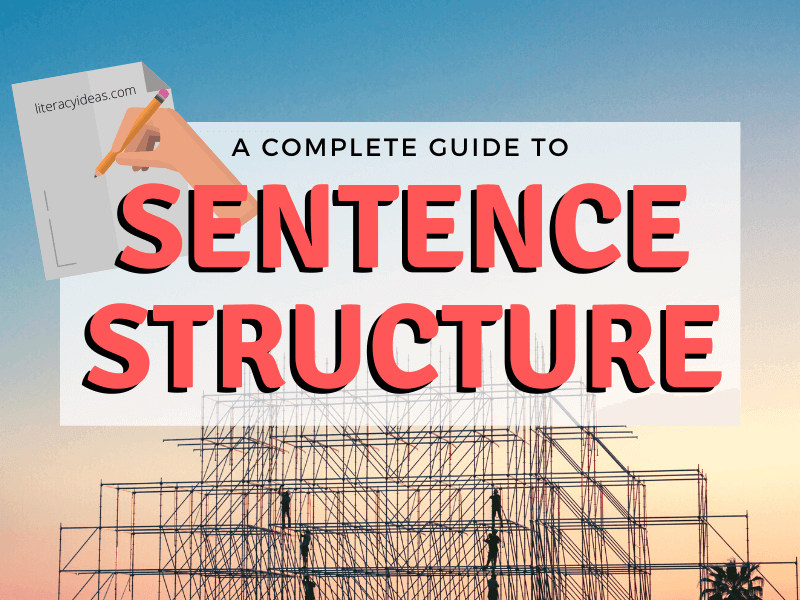
Once the student-writer has effectively expressed their opinion on a matter, they then will need to provide the reader with the reasons for why they think what they think. In an essay, these reasons will usually be found in the body paragraphs or development paragraphs. Normally, these paragraphs will explore a single reason each.
Some helpful sentence starters for introducing these reasons include:
● One reason I feel this way is…
● Evidence to support this can be found in…
● I believe this to evident in…
Opinion Writing Activities for Students
Students will certainly need practice completing sustained pieces of opinion writing, but some of the most valuable activities to help students evolve their opinion writing abilities barely require a pen to be put to paper.
While the following two activities do not require students to engage in extended pieces of writing, the activities below will assist students in grasping some essential concepts. These activities demonstrate good practice through modelling and also encourage dialogue, discussion, and debate as a means to strengthen opinion writing.
Activity 1: Opinion Writing – What Is It?
This exercise is a good follow-up to introductory work outlining the criteria of opinion writing as described above.
● Start by passing out copies of a piece of opinion writing you have selected to read with the class. Read the text aloud as the students follow along with their copy. The opinion text chosen can come from a wide range of genres, including advertisements, letters, editorials, essays, articles, or reviews.
● Assign students a talking partner and instruct students to take five minutes to identify the various criteria employed in the text. Encourage students to mark and annotate their copies of the text accordingly. You may even wish to supply students with a checklist compiled from the criteria mentioned previously in this article.
● As a whole class, discuss how successfully the text fulfills the criteria. What did the writer do well? What could they have done better? You can record their responses on the whiteboard.
The aim of this exercise is for students to hone their critical faculties while internalizing the criteria. This will reap rewards when the students later engage in their own extended opinion writing.
Activity 2: The Collaborative Case
This activity employs collaboration to help students build a stronger case for their opinion on a divisive issue.
● First, define the parameters of the exercise by presenting an either/or conundrum to the class. This doesn’t have to be overly controversial in nature, just stated in such a way that it forces the students to take one side or another. This could be stated simply as a choice, e.g. Dogs or cats? City or countryside? Beach or Mountains? Sweet or savory?
● Students then divide into two groups according to their stated preferences. In their groups, they then discuss and compile as many supporting reasons for their choice as they can come up with. As a group, they will discuss the relative merits of each reason, before agreeing on their top five.
● The groups then share their reasons in a debate format, using arguments and counter-arguments, leading into an open, free-ranging discussion.
The value of this exercise lies in the collaborative and ‘combative’ natures of the exercises. Just as our physical muscles can grow through resistance, so too can the strength and resilience of our opinions and arguments.
This activity can also be used as a lead-in to opinion writing as it works well as a prewriting preparation exercise. The complexity of the issue to be discussed and debated can easily be modified to suit the abilities of the students too.
A COMPLETE UNIT ON TEACHING FIGURATIVE LANGUAGE

FIGURATIVE LANGUAGE is like “SPECIAL EFFECTS FOR AUTHORS.” It is a powerful tool to create VIVID IMAGERY through words. This HUGE UNIT guides you through completely understanding FIGURATIVE LANGUAGE .
⭐⭐⭐⭐⭐ (26 Reviews)
OPINION WRITING VIDEO TUTORIALS
These videos from teaching without frills are an excellent starting point for opinion writing. You can view the entire collection here.
The Wrap Up
Opinion writing is a higher-level skill that makes many demands on our students. It will challenge them to move beyond parroting the facts and figures they have acquired in their learning to formulate their own thoughts on topics they have learned about in class, or in the wider world beyond the school gates.
It will make demands on their skill as writers too. Our students must learn to mold and mechanically manipulate the language on the page to express their beliefs persuasively and effectively. To do this successfully, they will need ample opportunities to practice their writing craft. Once a firm understanding of the structures involved has been established, the student can become more fluid in their expression. They will add art and flair to their craft. But first, they must build on these firm foundations.
OTHER GREAT ARTICLES RELATED TO OPINION WRITING

Top 5 Persuasive Writing Techniques for Students

5 Top Persuasive Writing Lesson Plans for Students and Teachers

How to Write Perfect Persuasive Essays in 5 Simple Steps

23 Persuasive writing Topics for High School students
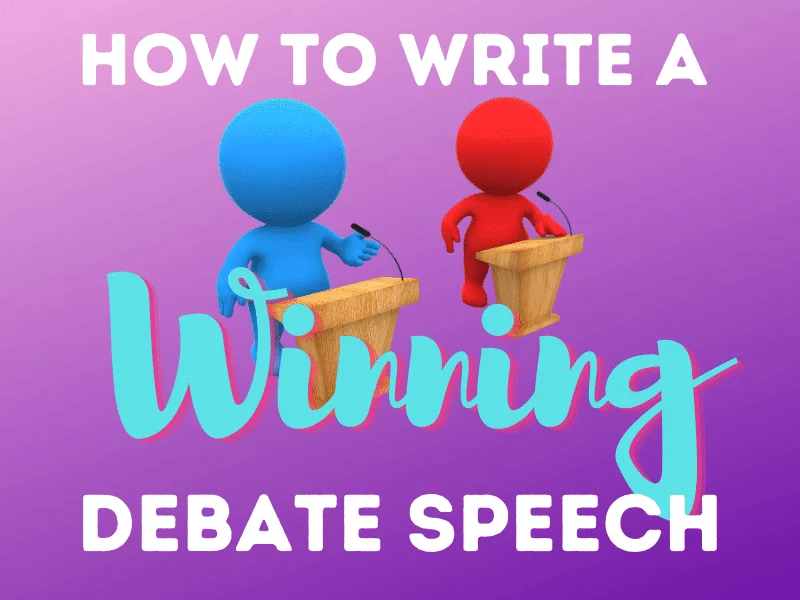
How to Write a Winning Debate Speech
NASET.org Home Page
Exceptional teachers teaching exceptional children.
- Overview of NASET
- NASET Leadership
- Directors' Message
- Books by the Executive Directors
- Mission Statement
- NASET Apps for iPhone and iPad
- NASET Store
- NASET Sponsors
- Marketing Opportunities
- Contact NASET
- Renew Your Membership
- Membership Benefits
- Frequently Asked Questions
- Membership Categories
- School / District Membership Information
- Gift Membership
- Membership Benefit for Professors Only
- NASET's Privacy Policy
- Forgot Your User Name or Password?
- Contact Membership Department
- Resources for Special Education Teachers
- Advocacy (Board Certification for Advocacy in Special Education) BCASE
- Board Certification in Special Education
- Inclusion - Board Certification in Inclusion in Special Education (BCISE) Program
- Paraprofessional Skills Preparation Program - PSPP
- Professional Development Program (PDP) Free to NASET Members
- Courses - Professional Development Courses (Free With Membership)
- Forms, Tables, Checklists, and Procedures for Special Education Teachers
- Video and Power Point Library
- IEP Development
- Exceptional Students and Disability Information
- Special Education and the Law
- Transition Services
- Literacy - Teaching Literacy in English to K-5 English Learners
- Facebook - Special Education Teacher Group
- NASET Sponsor's Products and Services
- ADHD Series
- Assessment in Special Education Series
- Autism Spectrum Disorders Series
- Back to School - Special Review
- Bullying of Children
- Classroom Management Series
- Diagnosis of Students with Disabilities and Disorders Series
- Treatment of Disabilities and Disorders for Students Receiving Special Education and Related Services
- Discipline of Students in Special Education Series
- Early Intervention Series
- Genetics in Special Education Series
- How To Series
- Inclusion Series
- IEP Components
- JAASEP - Research Based Journal in Special Education
- Lesser Known Disorders
- NASET NEWS ALERTS
- NASET Q & A Corner
- Parent Teacher Conference Handouts
- The Practical Teacher
- Resolving Disputes with Parents Series
- RTI Roundtable
- Severe Disabilities Series
- Special Educator e-Journal - Latest and Archived Issues
- Week in Review
- Working with Paraprofessionals in Your School
- Author Guidelines for Submission of Manuscripts & Articles to NASET
- SCHOOLS of EXCELLENCE
- Exceptional Charter School in Special Education
- Outstanding Special Education Teacher Award
- Board Certification Programs
- Employers - Job Posting Information
- Latest Job Listings
- Professional Development Program (PDP)
- Employers-Post a Job on NASET
- PDP - Professional Development Courses
- Board Certification in Special Education (BCSE)
- Board Certification in IEP Development (BCIEP)
- NASET Continuing Education/Professional Development Courses
- HONOR SOCIETY - Omega Gamma Chi
- Other Resources for Special Education Teaching Positions
- Highly Qualified Teachers
- Special Education Career Advice
- Special Education Career Fact Sheets
- FAQs for Special Education Teachers
- Special Education Teacher Salaries by State
- State Licensure for Special Education Teachers
- Integrated Writing Instruction
Introduction
Students with writing disabilities typically find the act of writing to be both difficult and unrewarding. These students' resulting lack of motivation to write can lock them into a downward spiral, in which they avoid most writing tasks and fail to develop those writing skills in which they are deficient. Indeed, for some students, a diagnosed writing disability may not be neurologically based but instead can be explained by the student's simple lack of opportunities to practice and build competent writing skills.
This issue of The Practical Teacher provides an integrated approach to classroom writing instruction designed to accommodate the special needs of disabled writers, as well as those of their non-disabled peers.
NASET Members may access this Practical Teacher by Logging in (see Login area to the right). Visitors can access a sample issue by Clicking Here
Publications
- What Happens When Children Who Do Not Respond to or Struggle Greatly with Phonics, More of the Same?
- Combining Phonics and Whole Language for Reading Instruction
- Utilizing the Math Routine, “Would You Rather,” to Support Meaningful Classroom Interaction for ALL Students
- Teaching Self-Advocacy Skills to Students with Autism and Other Disabilities
- How Rhyming and Rappin’ Can Improve Reading and Writing: Improving Poetic Intelligence
- U.S. Department of Education Releases New Resource on Supporting Child and Student Social, Emotional, Behavioral and Mental Health during COVID-19 Era
- How Spelling Can Help Reading Learning Common Core Words Quickly and Easily
- Special Advice for Special Educators
- An Alignment of Interactive Notebooks with the Principles of Universal Design
- Comparing and Contrasting Research-to-Teaching Practices: A Critical Analysis of Highly Restrictive Special Education Placements for Students with Low-Incidence Disabilities
- Parental Involvement within Culturally and Linguistically Diverse Families: Misconceptions, Barriers, and Implications
- The Effects of Parent Therapy for Disruptive Behaviors: A Review of the Literature
- Children’s Literature + DI + UDL + Mathematics = Success for Students with Disabilities
- Positive Student-Teacher Relationships: An In-Depth Look into a Behavior Program and its Implications for Teachers of Students with EBD
- A Classroom Without Walls: A New Method for Teaching Life Skills
- 7 Things Secondary Special Education Teachers Need to Know Concerning Career Technical Education
- Understanding and Achieving Collaboration in Special Education*
- Intervention for Struggling Writers in Elementary School: A Review of the Literature
- Fire Safety: How to Teach An Essential Life Skill
- Reciprocal Peer Tutoring: A Review of the Literature
- A Collaborative Approach to Managing Challenging Behaviors of Students with Disabilities: A Review of Literature
- Students with Disabilities in Postsecondary Institutions: What Higher Education Should Be Doing to Support Them
- Hospitality in an Inclusive Classroom
- UDL and Art Education for Students with Disabilities and Physical Impairments
- Truly Experiencing Teaching and Learning for the First Time: Snails are Introduced to a Community of Learners Patricia Mason, Ed.D.
- Disproportionate Representation of English Language Learners (ELLs) in Special Education Programs
- 1+1= iPad Math Apps for Teachers
- Using Music to Teach Reading to Kindergarten Students
- Creating a Classroom for Diverse Learners
- The Challenges of Special Education for Parents and Students: A Literature Review By Reshma Mulchan
- Transitioning From School to the Workplace for Students with Disabilities By: Dr. Faye J. Jones
- Practical Social Skills for Special Education Students
- Effective Communication for Students with Hearing, Vision, or Speech Disabilities in Public Elementary and Secondary Schools
- Educational Services for Immigrant Children and Those Recently Arrived to the United States
- Resources within the Medical and Health Care Community
- Inquiry - Based Learning: Special Education Applications By Jillian F. Swanson
- Intensifying Intervention By Peter Dragula, M.Ed., Doctoral Candidate Capella University
- Special Education Research: Where to Start?
- Intellectual Disabilities in Your Classroom: 9 Tips for Teachers
- Common Core State Standards - Overview
- Multiple Disabilities in Your Classroom: 10 Tips for Teachers
- Supports, Modifications, and Accommodations for Students with Disabilities
- The Five Secrets to Being a Special Education Teacher and Still Loving Your Job
- Bridging the Great Divide: Best Practice Ideas for the Resource/Inclusion Teacher
- Enjoying Favorite Books with Struggling Readers: Part 2
- Trauma Informed Teaching in Special Education By: Joshua A. Del Viscovo, M.S., B.C.S.E.
- Enjoying Favorite Books with Struggling Readers: Part I
- A Proper Fraction Museum
- A Review of Financial Literacy Programs for K-12 Students with Intellectual Disabilities: Utilizing the Principles of Universal Design for Learning
- Winnowing the Internet: Websites for Teachers of Students with Moderate to Severe Disabilities
- Students Who Have Difficulty Learning to Read with Phonics
- Positive Communication Strategies for Collaborating with Parents of Students with Disabilities
- Five Aspects of Teacher influence on Student Behavior
- Teaching Students with Emotional and Behavioral Disabilities (EBD)
- A Primer on Behavior Management
- Is There Only One Way to Teach Reading? Learning to Read in a Different Way
- Anxiety Disorders by Robin Naope Student at Chaminade University Hawaii
- Schedule A Hiring Authority: Tips for Youth and Young Adults with Disabilties Interested in Starting a Career with the Federal Government
- Trusting Information Resources
- College Planning for the Child with Special Needs: A Parent and Teacher Collaboration
- Latin and Greek Word Root Study to Accelerate Spelling, Vocabulary, and Reading Proficiency for All Students
- Dignity, Function, & Choice: Ethical and Practical Considerations on Best Practices for Education Learners with Developmental Delays
- Peer Tutoring: A Strategy to Help Students with Learning Disabilities
- Henrietta's Workshop
- Mental Health Resources
- Centers for Literacy in a Multi-Level Special Education Classroom
- Rapid Reading Cards
- Science Brain Efficient Word Lists
- Brain Efficient Word Lists for Word Sorts, Puzzles, and More
- Plain Language Writing
- Teaching to the Students' Abilities
- World History Brain Efficient Word Lists for Word Sorts, Puzzles, and More
- Tips for Calling on Students in Class
- Tips for Building a Course Website
- The Fourth Grade Slump
- The Brain, Prosody, and Reading Fluency
- Games, Contests & Puzzles: Entertaining Ideas for Educating Students
- A Reading Strategy for Content-Area Teachers
- Using Pen Pal Writing to Improve Writing Skills and Classroom Behavior
- Trouble-Shooting Reward Programs: A Teacher's Guide
- Transforming Schools from Bully-Havens to Safe Havens
- Best Practices in Mathematics
- School-Wide Strategies for Managing Reading
- Applied Math Problems
- Breaking the Attention-Seeking Habit: The Power of Random Positive Teacher Attention
- The Good Behavior Game
- Victims: Preventing Students From Becoming 'Bully-Targets'
- Math Problem-Solving: Combining Cognitive & Metacognitive Strategies in a 7-Step Process
- Bullies: Turning Around Negative Behaviors
- Creating Reward Menus That Motivate
- Points for Grumpy
- Bystanders: Turning Onlookers into Bully-Prevention Agents
- Finding the Spark: More Tips for Building Student Motivation
- Encouraging Student Academic Motivation
- Teacher Behavioral Strategies: A Menu
- Establishing a Positive Classroom Climate: Teacher Advice
- Talk Ticket
- Positive Peer Reports
- Preventing Graffiti and Vandalism
- School-Wide Strategies for Managing Mathematics
- What Every Teacher Should Know About Punishment Techniques and Student Behavior Plans
- Strategies for Working With Emotionally Unpredictable Students
- Managing Test Anxiety
- Entertaining Ideas for Educating Students
- Working With Defiant Kids
- Breaking the Attention-Seeking Habit
- Guided Notes
- Reducing Problem Behaviors Through Good Academic Management
- Creating Safe Playgrounds: A Whole-School Approach
- Paired Reading
- Strategies for Managing Defiance and Non-Compliance
- Extending Learning Across Time & Space
- Forced-Choice Reinforcer Assessment: Guidelines
- Response Effort
- Smooth Classroom Traffic
- Strategies to Prepare Classrooms for Substitute Teachers
- Effective Teacher Commands
- Respectful Classroom
- Establishing a Positive Classroom Climate
- What Teachers Need to Know About Annual & Triennial Reviews
- Training and Working with your Assistant Teachers and Paraprofessionals
- Error Correction & Word Drill Techniques
- Tools to Build Student Text and Lecture Comprehension
- Study Skills Package
- Homework Contracts
- Classwork & Homework
- Finding the Spark: Tips for Building Student Motivation
- Dodging the Power-Struggle Trap
- Introducing Academic Strategies to Students
- Group-Response Techniques
- School-Wide Strategies for Managing - HYPERACTIVITY
- School-Wide Strategies for Managing.......BUS CONDUCT
- Behavioral Contracts
- Determining Measurable Annual Goals in an IEP
- Parent Teacher Conference - 10 Strategies
- Behavioral Interventions - ADHD Students
- Understanding Extended School Year Services
- Accommodating All Students: 'Classic' Ideas That Teachers Can Use to Diversify Classroom Instruction
- School-Wide Strategies for Managing OFF-TASK / INATTENTION
©2024 National Association of Special Education Teachers. All rights reserved

Disciplinary Approaches to Composing Texts
Writing in Special Education
By professor leanne syring.
Writing in the field of education is essential to share insights and information. A teacher may want to research a topic to teach. The research may include the history of the topic, the current status of the topic, or how to best teach the particular topic. Perhaps you, as a teacher, have taught a lesson or a unit in the area and it worked well. You may write a blog, design a curriculum, or write a journal article on the subject. Sharing knowledge, expertise, and experience aids in the development of others.
Types of writing in Special Education
All types of writing are done in the field of education. There are textbooks to guide teaching such as Harry Wong’s The First Day of School: How to Be an Effective Teacher. There are also specific curriculums' a school may follow, such as Core Knowledge Curriculum by E.D. Hirsch. Books of nonfiction are also included in the field of education as a source of knowledge and enlightenment, such as A Thorn in My Pocket: Temple Grandin’s Mother Tells the Family Story by Eustacia Cutler. Journal articles for research, practical magazines for ideas, blogs, tweets, websites, and Facebook pages, are other varieties of writing in the education field.
The areas that have the most impact on the field on a daily basis are the blogs and social media posts (such as tweets) that share instantaneous information. A writer than can convey a message succinctly and with high interest can spread information more quickly and across a broader audience than research journals. However, the research being done in education is important in advancing the field, formulating new ideas and proving or disproving the worth of the idea.
Writing in the Special Education classroom
Students in the education classrooms write essays, research articles, policy papers, and teaching assessments. A variety of writing styles is required. These skills transfer outside of the university experience for teachers as they assess their students, write articles for school news, correspond with parents, research topics, and advocate for their students or school. Funding for schools is also an issue at times and the ability to write grant proposals is also a sought after skill.
Tips for writing well in Special Education
Key markers in the field of educational writing include a succinct, yet descriptive title. Also, citation of sources and adherence to the formatting that is included in APA. A paper that is formatted correctly is instantly recognizable. It is important to use the APA manual when writing.
View a video on Writing in Special Education.
Special Education: Disciplinary Perspective
Reading in Special Education
Research in Special Education
Documentation in Special Education
- Introduction to the Text
- Writing is Important in your Major
- Advice from Students
- Making Your Writing Work: Ethos & Commonplaces
- Professional Associations
- Scholarship as Conversation
- Genres and Finding Sources
- Genres, Metagenres, and the Rhetorical Situation
- Analyzing Scholarly, Trade, and Popular Sources
- Library Research Overview
- Introduction To Research
- Research Process
- Choosing a Topic
- Determining Genres
- Trouble Finding Sources
- Videos Overview
- Special Education
- Annotated Writing Samples
- Agricultural Education Overview
- Documentation
- Scholarly Writing Sample
- Business Administration Overview
- Communication Studies Overview
- Student Writing Sample
- Computer Science Overview
- Education Overview
- Environmental Science Overview
- Exercise Science Overview
- History Overview
- Justice Administration Overview
- Literary Studies Overview
- Marketing Overview
- Math Overview
- Nursing Overview
- Philosophy Overview
- Professional Writing and Communication Overview
- Videos (English)
- Social Work Overview
- Special Education Overview
Register for free
Opinion Writing | Special Education | fact vs opinion
$ 5.50 Multi-licenses $ 4.50
- ELD – ESL – EFL
- Language Arts
- Special Education
- Resource Type
sold by Totally Autism
View shop page
Item Details
Digital Download
INSTANT DOWNLOAD Files will be available for download from your account once payment is confirmed. Learn more . Please contact the seller about any problems with your order using the question button below the description.
Item description
This opinion writing unit is meant to reach your learners on the adapted curriculum and the general curriculum at the same time! Students will learn to generate or choose an opinion, as well as tell the difference between fact and opinion.
Students in special education who are non-writers can benefit from this resource.
This unit is intended to reach all your special learners with various levels of differentiation.
Watch the full video preview!
I have always had a hard time meeting the needs of my students on grade level and on the adapted curriculum track. This unit meets both needs at the same time.
2 levels are included:
Level 1- No physical writing- cut/paste- (adapted curriculum)
Level 2- writing (general education curriculum)
Also included is:
- “Naked Mole Rat Gets Dressed” by Mo Willems
- “Hey, Little Ant” by Phillip and Anna Hoos
- “Earings” by Judith Viorst
- Fact vs. Opinion
- What do Good Opinion Writers Do?
- Editing Checklist
- Abbreviations
- Commas in a Series
- Opinion Writing Idea Bank
- Differentiated Practice Pages (fact vs. opinion, abbreviations, commas in a series)
- 10 Opinion topics with cut/paste pages
Not sure how to use this resource? Check out this blog post to help:
https://totallyautism.net/engaging-students-with-ot-difficulties-in-the-writing-process/
From the same author
Va geography | virginia studies | adapted social studies.
by Totally Autism
Are you having trouble finding accessible Virginia Studies materials for your students with autism? Here it is!- VA Geography is aligned to the 4th Grade VA SOLs. Material is broken…
- Social Studies – History
Story Elements | Identify Character and Setting | Special Ed
Do your students struggle with story elements, including the characters and setting of a story? This set of visuals is perfect for students with autism or other disabilities who have…
- Kindergarten
Writing Sentences
Beginning to teach students with autism to write sentences can be difficult. Where do you even start!? I hope this Writing Sentences product will help you! This product is visually…
Intro to the Writing Process | Special Education | Autism
Teach students with autism and special needs how to engage in the writing process- brainstorm, plan, draft, brainstorm, and celebrate! Students with autism who have difficulty writing CAN participate in…
The Hechinger Report
Covering Innovation & Inequality in Education

OPINION: Why we need a new generation of special education teachers
Share this:
- Click to share on LinkedIn (Opens in new window)
- Click to share on Pinterest (Opens in new window)
- Click to share on Reddit (Opens in new window)
- Click to share on WhatsApp (Opens in new window)
- Click to email a link to a friend (Opens in new window)
The Hechinger Report is a national nonprofit newsroom that reports on one topic: education. Sign up for our weekly newsletters to get stories like this delivered directly to your inbox. Consider supporting our stories and becoming a member today.
Get important education news and analysis delivered straight to your inbox
- Weekly Update
- Future of Learning
- Higher Education
- Early Childhood
- Proof Points
For Black and Brown students with disabilities, online instruction has often been a failure. It is also suboptimal for students with disabilities across racial groups, especially as teachers without training have had to shift instruction.
Many Black and Brown families include essential workers or individuals who are more vulnerable to Covid-19. Fewer Black and Brown communities are able to access services for students with disabilities and high-quality instruction for their children in public schools.
Monica Gonzalez, a special education teacher at Bret Harte Middle School in Hayward, California, said the online platform Google Classroom tends to exacerbate some of the issues faced in classroom instruction.
“I still have to figure out how to effectively provide small-group instruction using virtual breakout rooms, yet coordinate and balance whole-group virtual content instruction for my students,” Gonzalez said in a recent interview.
Black and Brown students with disabilities are among the most marginalized groups in schools. Recent data show that the risk of being labeled with a disability is about 40 percent higher for Black children. Special education was created to help students with disabilities receive a free and appropriate public education, but data show a different side for Black and Brown children. In addition to being more likely to be labeled, Black and Brown children are more likely to receive a watered-down, irrelevant curriculum.
They are more likely to be placed in segregated special education classrooms (despite growing trends toward including more students with disabilities in general education classrooms with appropriate supports). They also are targeted for harsher discipline policies such as suspension or expulsion for minor behavioral challenges. The impacts of racism and bias against disability are like hurricanes for Black and Brown students: devastating and destructive.
While there are systemic reasons for these inequitable outcomes, teachers play a critical role in how students are identified for special education and taught in the classroom. Yet there remains a huge shortage of special education public school teachers across most U.S. school districts. Teacher preparation programs and districts, therefore, tend not to be selective about who are placed in these positions.
The impacts of racism and bias against disability are like hurricanes for Black and Brown students: devastating and destructive.
To ameliorate shortages, districts and programs may depend on teachers who have been certified in alternative ways, via fast-tracked models, or rely on part-timers. This means that teachers step into the classroom with less preparation. Yet they could learn from the critical work of disability justice community activists and scholars, many of whom identify as disabled and are already doing this work online. They could use the Access Is Love Readings and Resource List, coordinated by Alice Wong, Sandy Ho and Mia Mingus , to provide concrete examples of how to meaningfully deliver accessible online instruction.
Related: Special education’s hidden racial gap
Existing inequities for Black and Brown students with disabilities remain in traditional public schools, but perhaps we can use the pandemic to reimagine ways teachers, leaders and other educational professionals can help center the lives of Black and Brown students with disabilities. For example, we could draw upon the lived experiences of disabled communities, disability justice activists and scholars. We could deeply prepare and engage students in a better understanding of the inequities in schools for Black and Brown children with disabilities. We need to encourage more Black and Brown teachers and teachers with disabilities into the field who are representative of our changing school demographics, and who are committed to the work of racial and disability justice.
Community scholar and activist Leroy F. Moore Jr., in his book “Black Disabled Ancestors,” writes: “Black disabled people have ancestors who left knowledge, art, music, culture, politics and a lot of pain for us to pick up, build on, and to tell the harsh truth.”
Now, more than ever before, we have opportunities as teachers, school leaders and teacher preparation program educators to work toward addressing inequities for Black and Brown students with disabilities in ways we may not have seen as possible or imaginable.
Saili S. Kulkarni is an assistant professor at San José State University with a research focus on disability, race and special education teacher preparation. She is a Public Voices Fellow with the OpEd Project .
This story about students with disabilities was produced by The Hechinger Report, a nonprofit, independent news organization focused on inequality and innovation in education. Sign up for the Hechinger newsletter.
Related articles
The Hechinger Report provides in-depth, fact-based, unbiased reporting on education that is free to all readers. But that doesn't mean it's free to produce. Our work keeps educators and the public informed about pressing issues at schools and on campuses throughout the country. We tell the whole story, even when the details are inconvenient. Help us keep doing that.
Join us today.
Letters to the Editor
At The Hechinger Report, we publish thoughtful letters from readers that contribute to the ongoing discussion about the education topics we cover. Please read our guidelines for more information. We will not consider letters that do not contain a full name and valid email address. You may submit news tips or ideas here without a full name, but not letters.
By submitting your name, you grant us permission to publish it with your letter. We will never publish your email address. You must fill out all fields to submit a letter.
Your email address will not be published. Required fields are marked *
Save my name, email, and website in this browser for the next time I comment.
Sign me up for the newsletter!
Print this page
Be a More Effective Advocate: Drafting Written Opinions - A How to Manual By Patricia Howey

The IEP meeting is an important business meeting where the business at hand is your child’s education. Prepare for and document IEP meetings carefully. The success of your child’s education may depend on how well you document what happens during the IEP meeting. Record Your IEP Concerns in a Written Opinion
IDEA 2004 specifically allows you to submit your concerns to the IEP Team. One way to record your concerns is to use a written opinion.
Your written opinion ensures that the IEP team understands what you think happened at the meeting. Tell the team that you will be sending a written opinion later. You do not have to be an expert on “the law” to write a written opinion. In fact, it may be best not to quote or interpret the law in your written opinion.
Your written opinion can include:
- What happened at the meeting.
- What did not happen.
- What the team discussed or failed to discuss.
- Team decisions to which you did not agree.
- Relevant facts the IEP does not include.
- Correction of wrong facts in the IEP.
Listen to your little inner voice. If something does not seem right, write it down. Your little inner voice is right most of the time.
Stick to the facts and you will maintain your credibility. Do not make personal attacks.
Assume that your written opinion will end up as an exhibit in a future due process hearing. You cannot know what facts might be important in the future so include as many relevant facts as possible in your written opinion.
Correcting Facts with Your Written Opinion
Successful IEP meetings require preparation. Be prepared to begin your written opinion during the IEP meeting. At the top of the page write “Written Opinion.” Below that, write “Page 1.” Write your child’s name and the date in the top right hand corner of the first page. During the meeting you may see that there are disagreements. When this happens begin the notes for your written opinion.
Even if you think your written opinion is complete at the end of the meeting, do not turn it in . Promise to send it no later than a week after you receive the IEP.
When you receive the IEP, you will compare your meeting notes or tape recording of the meeting to the facts included in the IEP. If the facts don’t match up, you will correct them in your written opinion.
Here are some examples of types of statements you may want to use in your written opinion:
- Johnny needs an extended school year. The school will not provide one.
- I do not agree with the proposed goals and benchmarks.
- The team wants Johnny to be in a resource room for half of the school day. I would like some time to consider this and would also like to visit the room.
- The team proposes wants the school counselor provide therapy for Johnny. I have concerns about this but I am willing for this counseling to take place for five weeks. Then, I would like us to meet to discuss Johnny’s progress.
- I may have other points to submit after I have looked at all of the paperwork from the meeting.
Be concise. Each point in your written opinion should be only one or two sentences. This is not the time for reason or argument. If you provided each team member with a Parent Report or Parent Agenda before the IEP meeting, you already gave your reason and argument. You do not have to argue your position again. Your written opinion just includes the facts .
Use clear language that is easy to understand. Be factual, not critical. Your written opinion may provide the facts that persuade the IEP team Johnny really does need more services. You may use your opinion later as a tool for negotiation and persuasion.
Include the following in your written opinion.
1. A brief/short cover letter that includes:
- The time and date of the IEP meeting
- A paragraph thanking the team for their input about your child
- The date of your written opinion
- Your signature.
2. Important facts the IEP does not include.
3. Corrections to facts included in the IEP.
4. Decisions with which you agreed and those with which you did not agree.
5. Things the team did not discuss.
6. Things that you asked on which the team made no decision.
7. Items that you asked to be included the IEP but were omitted.
8. Page numbers on each page.
Plan to draft a written opinion following every team meeting. If you do not record your opinion, the IEP team may think you agree with all of the decisions and the IEP. No one will hear your voice.
The written opinion is an effective document that tells the IEP meeting story from your viewpoint as a parent. Think of it as a tool, not a weapon. To avoid disappointment understand that it may not force the school to do anything. However, it may prove to be the evidence you later need to prove your case.

Pat began her advocacy career as a volunteer for the Task Force on Education for the Handicapped (now InSource), Indiana’s Parent Training and Information Center. In 1990, she opened her advocacy practice and served families throughout Indiana by representing them at IEP meetings, mediation, and due process hearings.
In 2017, Pat closed her advocacy practice and began working on a contract basis as a special education paralegal. Attorneys in Indiana, Texas, and California contracted with her to review documents, spot issues, draft due process complaints, prepare for hearings, and assist at hearings. In January 2019, she became an employee of the Connell Michael Kerr law firm, owned by Erin Connell, Catherine Michael, and Sonja Kerr. Her duties have now expanded to assisting with federal court cases. "Changing the World -- One Child at at Time . "
Contact Information Patricia L. Howey, B.A., IRP POB 117 West Point, Indiana 47992-0117 E-mail: [email protected] Webpage: https://cmklawfirm.com/ To Top Revised: 09/09/2020
My work teaching special ed makes a difference. But how much more can I take on? | Opinion
I became a special education (special ed) teacher after 20-plus years of being a general education teacher. I wanted to work with and advocate for students with disabilities. I like my job, and my support makes a difference. My workload, however, has increased due to staffing shortages, and I wonder how much more I can take on.
I co-teach while providing differentiated instruction, or “service,” for students with special needs placed in general education classrooms. Services, measured in minutes, are stated in a student’s Individualized Education Program and based on their disabilities. I’m also a case manager for 20 students. I maintain special ed documents, track progress, and facilitate meetings with families and educators. I work at full capacity, worried that one mistake might lead to non-compliance.
There is a critical shortage of special ed teachers in Texas, yet the number of students who qualify keeps growing . Heavy workloads negatively impact the quality of services we provide. In one class, for example, eleven students (about half the class) require between 45-75 minutes of individualized instruction. While one student with dyslexia, for example, needs simplified instructions repeated, another student with a learning disability in reading comprehension needs guiding questions to understand the theme of a story. Spending more than a few minutes with one student means I can’t get to everyone.
Special education is underfunded by $1.8 billion annually, according to the Texas Commission on Special Education Funding. Despite this deficit, legislators continue to pass laws requiring more of special ed teachers, such as House Bill 3928 , which increases caseloads significantly. We cannot continue to do more with less. State legislators must pass special education finance reform because students with disabilities need qualified special education teachers to provide appropriate services.
Change Texas' funding formula for special education
The 30-year-old special ed funding formula is inefficient, inequitable, and ineffective for improving student outcomes. According to the 2023 Texas Academic Performance Report , 13.6% of students in special ed were prepared for college, compared to 59.2% of all Texas students. The Commission recommends a “ service-intensity ” based system that would allow Local Education Agencies (LEAs) to better staff for the services students need, not their placement. Currently, students with multiple disabilities who attend gen-ed classes receive less funding than students with one disability who attend self-contained classrooms.
The Commission recommends establishing grant programs to help LEAs grow teachers from within their communities. Paraprofessionals, for example, might receive financial assistance with acquiring their teaching credentials. Since low compensation is one of the primary reasons special ed teachers leave, stipends can help entice new teachers (like they did me) and retain existing ones. The Teacher Vacancy Task Force recommends mentors for new teachers and ongoing, high-quality training for us all. Training is especially important for special ed teachers, given the frequent changes in regulations.

Texas must pass stand-alone special education finance reform
In the 2023 legislative session, special education funding was denied because it was tied to the failed effort to pass Education Savings Accounts (ESAs), also called vouchers. ESAs allow public money to be spent on private school tuition. Private schools don’t have to accept or provide services for students with special needs, unlike public schools. If four special sessions were called to push for ESAs, a fifth can address special education funding reform.
In Texas, 11.7% , or about 700,000 students, rely on special ed teachers to receive services. Our students can’t wait until the next legislative session. In the words of Representative Steve Toth following the passage of House Bill 3928, “We need more money for public education…Texas needs to work harder at developing programs to take and train teachers on how to help these kids.”
It’s time they get it done.
Castañón-Hernandez is a special education inclusion teacher in Austin and a 2022-2023 TEACH PLUS National Senior Writing Fellow.
Inclusive Education in Russia and Abroad (Legal Aspects)
- First Online: 17 May 2017
Cite this chapter
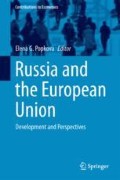
- Elena L. Simatova 2 ,
- Kristina V. Belgisova 2 &
- Olga V. Shapoval 2
Part of the book series: Contributions to Economics ((CE))
802 Accesses
The article analyzes the legal regulation of inclusive education in modern society, both at the international and national levels. The processes, according to the authors, levels existing in most countries a common understanding of the right of disabled persons to education as inalienable and absolute, deriving from the respect for their human dignity. In the present work investigates the main international documents regulating this right, including the Declaration on the rights of persons with disabilities and the Salamanca statement on principles, policy and practice in education of persons with special needs. Special attention is paid to the domestic regulation of inclusive education, including at the regional level.
This is a preview of subscription content, log in via an institution to check access.
Access this chapter
- Available as PDF
- Read on any device
- Instant download
- Own it forever
- Available as EPUB and PDF
- Compact, lightweight edition
- Dispatched in 3 to 5 business days
- Free shipping worldwide - see info
- Durable hardcover edition
Tax calculation will be finalised at checkout
Purchases are for personal use only
Institutional subscriptions
Guidelines on organizing the educational process of disabled persons in educational institutions of higher education, including the equipment of the educational process. Approved by Russian Ministry 8.4.2014 number of AK-44/05vn. SPS-Consultant Plus. On the direction of the Requirements (together with the “requirements for the organization of the educational process of disabled persons in professional educational organizations, including the equipment of the educational process”). Approved by Russian Ministry dated 26.12.2013 number 06-2412vn. Letter of the Russian Ministry of 18.03.2014 № 06-281. SPS Consultant
Google Scholar
In accordance with the Federal Law dated 29.12.2012 number 273-FZ (as amended on 02.03.2016.) “On Education in the Russian Federation” inclusive education—ensuring equal access to education for all students, given the diversity of special educational needs and individual possibilities
Law of Moscow dated 28.04.2010 number 16 (ed. From 25.06.2014) “On education of persons with disabilities in the city of Moscow”. Bulletin of the Mayor and the Moscow City Government, number 35, 22.06.2010
Law of Moscow of 28.04.2010 number 16 (ed. From 25.06.2014) “On education of persons with disabilities in the city of Moscow”. Bulletin of the Mayor and the Moscow City Government, number 35, 22.06.2010
On Education in the Russian Federation. Federal Law dated 29.12.2012 number 273-FZ (ed. From 07.03.2016) (rev. and ext., in force from 09.01.2016). Collection of the legislation of the Russian Federation of 31.12.2012, number 53 (h. 1), Art. 7598
On Education in the Russian Federation. Federal Law dated 29.12.2012 number 273-FZ (ed. By 03.07.2016). Collection of the legislation of the Russian Federation of 31.12.2012, number 53 (ch. 1), Art. 7598
On social protection of disabled persons in the Russian Federation. Federal Law dated 24.11.1995 number 181-FZ (ed. By 12.29.2015). Collection of the legislation of the RF FROM 27.11.1995, number 48, Art. 4563
Standard rules on the equalization of opportunities for persons with disabilities (adopted by the General Assembly of the United Nations it 20.12.1993). http://www.un.org/ru/documents/decl_conv/conventions/disabled (Official Records of the General Assembly, forty-eighth session Supplement №49 (A/48/49), str. 292-306)
The Constitution of the Russian Federation (adopted by national vote in 12/12/1993) (taking into account the amendments by Law on Amendments to the Constitution of the Russian Federation from 30.12.2008 number 6-ERPs from 30.12.2008 number 7 ERPs from 02.05.2014 number 2 FCL from 7.21.2014 number 11 FCL). SPS Consultant
The Declaration on the Rights of Disabled Persons (Adopted on 12/09/1975 Resolution 3447 (XXX) on the 2433 rd plenary Danish UN General Assembly). http://www.un.org/ru/documents/decl_conv/declarations/disabled.shtml
The Salamanca Statement on Principles, Policy and Practice in the field of education of people with special needs [Electronic resource]. http://www.conventions.ru/view_base.php?id=118 . Reference date 09 Sep 2016
The World Programme of Action concerning Disabled Persons (1983) (Adopted on 12/03/1982 by Resolution 37/52 of the UN General Assembly). World Programme of Action concerning invalidov. United Nations, New York, pp 1–61
Download references
Acknowledgement
The publication was prepared within the framework of the research project №16-13-23019 “Improvement of legal regulation of inclusive education in the higher education system in Krasnodar region” supported by RHSF and Krasnodar Krai administration.
Author information
Authors and affiliations.
Southern Institute of Management, Krasnodar, Russian Federation
Elena L. Simatova, Kristina V. Belgisova & Olga V. Shapoval
You can also search for this author in PubMed Google Scholar
Corresponding author
Correspondence to Elena L. Simatova .
Editor information
Editors and affiliations.
Volgograd State Technical University , Volgograd, Russia
Elena G. Popkova
Rights and permissions
Reprints and permissions
Copyright information
© 2017 Springer International Publishing AG
About this chapter
Simatova, E.L., Belgisova, K.V., Shapoval, O.V. (2017). Inclusive Education in Russia and Abroad (Legal Aspects). In: Popkova, E. (eds) Russia and the European Union. Contributions to Economics. Springer, Cham. https://doi.org/10.1007/978-3-319-55257-6_45
Download citation
DOI : https://doi.org/10.1007/978-3-319-55257-6_45
Published : 17 May 2017
Publisher Name : Springer, Cham
Print ISBN : 978-3-319-55256-9
Online ISBN : 978-3-319-55257-6
eBook Packages : Economics and Finance Economics and Finance (R0)
Share this chapter
Anyone you share the following link with will be able to read this content:
Sorry, a shareable link is not currently available for this article.
Provided by the Springer Nature SharedIt content-sharing initiative
- Publish with us
Policies and ethics
- Find a journal
- Track your research
Cutting a signature Rutgers University writing program would lower quality of education for students
3-minute read.
Why is the Rutgers University administration damaging a highly regarded and fundamental program that teaches writing skills to undergraduate students — something that they and everyone else at Rutgers think must remain a top priority? In the fall of 2024, there will be significantly fewer writing classes at Rutgers than there have been in the decade-plus that I have been teaching for the Rutgers-New Brunswick Writing Program.
Every fall, the New Brunswick writing program teaches up to a third of all 40,000 undergrads enrolled at Rutgers. These cuts will detrimentally affect students’ ability to learn the key writing skills they will need to succeed in both their academic and post-graduate careers. They will also affect their ability to graduate on time, as students will have greater difficulty finding classes that fulfill all of their extremely valuable writing requirements.
Writing is more and more the way that business is done. Students need to know how to communicate in order to make connections and excel in their jobs. At a time when we are all at risk of losing competency in these skills because of the rise of AI bots like ChatGPT, it is essential that we do not shortchange our students’ writing education.
By cutting the number of classes we offer, the Writing Program would be forced to raise the number of students per class to 24. Industry standards put the ideal number of students in a writing class at 15 and say that we should have no more than 20. A writing instructor can spend 30 to 45 minutes grading each draft of a student’s work; with 24 students per class, this is a minimum of 12 hours per week grading for one class. WIth three or four classes, there is no way to do all that grading and fulfill our other duties to our students, the university and our families.
Do we sacrifice the time we spend planning for classes? Do we give up office hours or other times where we might meet with students? Do we skip writing letters of recommendation? Do we turn our backs on our own families when they need us? Do we give up on committees that work to improve the education of our students? Or do we just not spend as much time giving the written feedback that helps students build these essential skills?
Not only will full-time faculty be forced to try to do more work than we are physically capable of doing, but — more importantly — adjunct lecturers will lose their jobs. There are beloved lecturers who have been teaching for Rutgers for over 40 years who would soon find themselves without an income. Some of our best instructors teach only a class or two each semester, whether because of family obligations or other jobs. Why would the administration throw away a resource like that?
All in all, the changes that the Rutgers administration is planning will mean that undergraduates will get a worse education than our alumni got, and they may take longer to graduate when they can’t find classes that allow them to fulfill their requirements.
While this is happening most drastically in the Writing Program, class sizes are going up and section numbers are going down all over the university. In order to save money — which, with a nearly $900 million strategic reserve, they do not need to do — the administration is choosing to provide students with a cut-rate education. With 11 employees, mostly in athletics, making over a million dollars per year, President Jonathan Holloway and Chancellor Francine Conway don't need to inflict these budget cuts and class size increases that will make it harder to fulfill the educational mission of the university.
Please send an email to let Holloway and Conway know that you will not stand for cuts in the quality of education that New Jersey’s students get.
Julie Flynn is an assistant teaching professor in the Writing Program and a member of Rutgers AAUP-AFT.
- Share full article
Advertisement
Supported by
Guest Essay
The Troubling Trend in Teenage Sex

By Peggy Orenstein
Ms. Orenstein is the author of “Boys & Sex: Young Men on Hookups, Love, Porn, Consent and Navigating the New Masculinity” and “Girls & Sex: Navigating the Complicated New Landscape.”
Debby Herbenick is one of the foremost researchers on American sexual behavior. The director of the Center for Sexual Health Promotion at Indiana University and the author of the pointedly titled book “Yes, Your Kid,” she usually shares her data, no matter how explicit, without judgment. So I was surprised by how concerned she seemed when we checked in on Zoom recently: “I haven’t often felt so strongly about getting research out there,” she told me. “But this is lifesaving.”
For the past four years, Dr. Herbenick has been tracking the rapid rise of “rough sex” among college students, particularly sexual strangulation, or what is colloquially referred to as choking. Nearly two-thirds of women in her most recent campus-representative survey of 5,000 students at an anonymized “major Midwestern university” said a partner had choked them during sex (one-third in their most recent encounter). The rate of those women who said they were between the ages 12 and 17 the first time that happened had shot up to 40 percent from one in four.
As someone who’s been writing for well over a decade about young people’s attitudes and early experience with sex in all its forms, I’d also begun clocking this phenomenon. I was initially startled in early 2020 when, during a post-talk Q. and A. at an independent high school, a 16-year-old girl asked, “How come boys all want to choke you?” In a different class, a 15-year-old boy wanted to know, “Why do girls all want to be choked?” They do? Not long after, a college sophomore (and longtime interview subject) contacted me after her roommate came home in tears because a hookup partner, without warning, had put both hands on her throat and squeezed.
I started to ask more, and the stories piled up. Another sophomore confided that she enjoyed being choked by her boyfriend, though it was important for a partner to be “properly educated” — pressing on the sides of the neck, for example, rather than the trachea. (Note: There is no safe way to strangle someone.) A male freshman said “girls expected” to be choked and, even though he didn’t want to do it, refusing would make him seem like a “simp.” And a senior in high school was angry that her friends called her “vanilla” when she complained that her boyfriend had choked her.
Sexual strangulation, nearly always of women in heterosexual pornography, has long been a staple on free sites, those default sources of sex ed for teens . As with anything else, repeat exposure can render the once appalling appealing. It’s not uncommon for behaviors to be normalized in porn, move within a few years to mainstream media, then, in what may become a feedback loop, be adopted in the bedroom or the dorm room.
Choking, Dr. Herbenick said, seems to have made that first leap in a 2008 episode of Showtime’s “Californication,” where it was still depicted as outré, then accelerated after the success of “Fifty Shades of Grey.” By 2019, when a high school girl was choked in the pilot of HBO’s “Euphoria,” it was standard fare. A young woman was choked in the opener of “The Idol” (again on HBO and also, like “Euphoria,” created by Sam Levinson; what’s with him ?). Ali Wong plays the proclivity for laughs in a Netflix special, and it’s a punchline in Tina Fey’s new “Mean Girls.” The chorus of Jack Harlow’s “Lovin On Me,” which topped Billboard’s Hot 100 chart for six nonconsecutive weeks this winter and has been viewed over 99 million times on YouTube, starts with, “I’m vanilla, baby, I’ll choke you, but I ain’t no killer, baby.” How-to articles abound on the internet, and social media algorithms feed young people (but typically not their unsuspecting parents) hundreds of #chokemedaddy memes along with memes that mock — even celebrate — the potential for hurting or killing female partners.
I’m not here to kink-shame (or anything-shame). And, anyway, many experienced BDSM practitioners discourage choking, believing it to be too dangerous. There are still relatively few studies on the subject, and most have been done by Dr. Herbenick and her colleagues. Reports among adolescents are now trickling out from the United Kingdom , Australia , Iceland , New Zealand and Italy .
Twenty years ago, sexual asphyxiation appears to have been unusual among any demographic, let alone young people who were new to sex and iffy at communication. That’s changed radically in a short time, with health consequences that parents, educators, medical professionals, sexual consent advocates and teens themselves urgently need to understand.
Sexual trends can spread quickly on campus and, to an extent, in every direction. But, at least among straight kids, I’ve sometimes noticed a pattern: Those that involve basic physical gratification — like receiving oral sex in hookups — tend to favor men. Those that might entail pain or submission, like choking, are generally more for women.
So, while undergrads of all genders and sexualities in Dr. Herbenick’s surveys report both choking and being choked, straight and bisexual young women are far more likely to have been the subjects of the behavior; the gap widens with greater occurrences. (In a separate study , Dr. Herbenick and her colleagues found the behavior repeated across the United States, particularly for adults under 40, and not just among college students.) Alcohol may well be involved, and while the act is often engaged in with a steady partner, a quarter of young women said partners they’d had sex with on the day they’d met also choked them.
Either way, most say that their partners never or only sometimes asked before grabbing their necks. For many, there had been moments when they couldn’t breathe or speak, compromising the ability to withdraw consent, if they’d given it. No wonder that, in a separate study by Dr. Herbenick, choking was among the most frequently listed sex acts young women said had scared them, reporting that it sometimes made them worry whether they’d survive.
Among girls and women I’ve spoken with, many did not want or like to be sexually strangled, though in an otherwise desired encounter they didn’t name it as assault . Still, a sizable number were enthusiastic; they requested it. It is exciting to feel so vulnerable, a college junior explained. The power dynamic turns her on; oxygen deprivation to the brain can trigger euphoria.
That same young woman, incidentally, had never climaxed with a partner: While the prevalence of choking has skyrocketed, rates of orgasm among young women have not increased, nor has the “orgasm gap” disappeared among heterosexual couples. “It indicates they’re not doing other things to enhance female arousal or pleasure,” Dr. Herbenick said.
When, for instance, she asked one male student who said he choked his partner whether he’d ever tried using a vibrator instead, he recoiled. “Why would I do that?” he asked.
Perhaps, she responded, because it would be more likely to produce orgasm without risking, you know, death.
In my interviews, college students have seen male orgasm as a given; women’s is nice if it happens, but certainly not expected or necessarily prioritized (by either partner). It makes sense, then, that fulfillment would be less the motivator for choking than appearing adventurous or kinky. Such performances don’t always feel good.
“Personally, my hypothesis is that this is one of the reasons young people are delaying or having less sex,” Dr. Herbenick said. “Because it’s uncomfortable and weird and scary. At times some of them literally think someone is assaulting them but they don’t know. Those are the only sexual experiences for some people. And it’s not just once they’ve gotten naked. They’ll say things like, ‘I’ve only tried to make out with someone once because he started choking and hitting me.’”
Keisuke Kawata, a neuroscientist at Indiana University’s School of Public Health, was one of the first researchers to sound the alarm on how the cumulative, seemingly inconsequential, sub-concussive hits football players sustain (as opposed to the occasional hard blow) were key to triggering C.T.E., the degenerative brain disease. He’s a good judge of serious threats to the brain. In response to Dr. Herbenick’s work, he’s turning his attention to sexual strangulation. “I see a similarity” to C.T.E., he told me, “though the mechanism of injury is very different.” In this case, it is oxygen-blocking pressure to the throat, frequently in light, repeated bursts of a few seconds each.
Strangulation — sexual or otherwise — often leaves few visible marks and can be easily overlooked as a cause of death. Those whose experiences are nonlethal rarely seek medical attention, because any injuries seem minor: Young women Dr. Herbenick studied mostly reported lightheadedness, headaches, neck pain, temporary loss of coordination and ear ringing. The symptoms resolve, and all seems well. But, as with those N.F.L. players, the true effects are silent, potentially not showing up for days, weeks, even years.
According to the American Academy of Neurology, restricting blood flow to the brain, even briefly, can cause permanent injury, including stroke and cognitive impairment. In M.R.I.s conducted by Dr. Kawata and his colleagues (including Dr. Herbenick, who is a co-author of his papers on strangulation), undergraduate women who have been repeatedly choked show a reduction in cortical folding in the brain compared with a never-choked control group. They also showed widespread cortical thickening, an inflammation response that is associated with elevated risk of later-onset mental illness. In completing simple memory tasks, their brains had to work far harder than the control group, recruiting from more regions to achieve the same level of accuracy.
The hemispheres in the choked group’s brains, too, were badly skewed, with the right side hyperactive and the left underperforming. A similar imbalance is associated with mood disorders — and indeed in Dr. Herbenick’s surveys girls and women who had been choked were more likely than others (or choked men) to have experienced overwhelming anxiety, as well as sadness and loneliness, with the effect more pronounced as the incidence rose: Women who had experienced more than five instances of choking were two and a half times as likely as those who had never been choked to say they had been so depressed within the previous 30 days they couldn’t function. Whether girls and women with mental health challenges are more likely to seek out (or be subjected to) choking, choking causes mood disorders, or some combination of the two is still unclear. But hypoxia, or oxygen deprivation — judging by what research has shown about other types of traumatic brain injury — could be a contributing factor. Given the soaring rates of depression and anxiety among young women, that warrants concern.
Now consider that every year Dr. Herbenick has done her survey, the number of females reporting extreme effects from strangulation (neck swelling, loss of consciousness, losing control of urinary function) has crept up. Among those who’ve been choked, the rate of becoming what students call “cloudy” — close to passing out, but not crossing the line — is now one in five, a huge proportion. All of this indicates partners are pressing on necks longer and harder.
The physical, cognitive and psychological impacts of sexual choking are disturbing. So is the idea that at a time when women’s social, economic, educational and political power are in ascent (even if some of those rights may be in jeopardy), when #MeToo has made progress against harassment and assault, there has been the popularization of a sex act that can damage our brains, impair intellectual functioning, undermine mental health, even kill us. Nonfatal strangulation, one of the most significant indicators that a man will murder his female partner (strangulation is also one of the most common methods used for doing so), has somehow been eroticized and made consensual, at least consensual enough. Yet, the outcomes are largely the same: Women’s brains and bodies don’t distinguish whether they are being harmed out of hate or out of love.
By now I’m guessing that parents are curled under their chairs in a fetal position. Or perhaps thinking, “No, not my kid!” (see: title of Dr. Herbenick’s book above, which, by the way, contains an entire chapter on how to talk to your teen about “rough sex”).
I get it. It’s scary stuff. Dr. Herbenick is worried; I am, too. And we are hardly some anti-sex, wait-till-marriage crusaders. But I don’t think our only option is to wring our hands over what young people are doing.
Parents should take a beat and consider how they might give their children relevant information in a way that they can hear it. Maybe reiterate that they want them to have a pleasurable sex life — you have already said that, right? — and also want them to be safe. Tell them that misinformation about certain practices, including choking, is rampant, that in reality it has grave health consequences. Plus, whether or not a partner initially requested it, if things go wrong, you’re generally criminally on the hook.
Dr. Herbenick suggests reminding them that there are other, lower-risk ways to be exploratory or adventurous if that is what they are after, but it would be wisest to delay any “rough sex” until they are older and more skilled at communicating. She offers language when negotiating with a new partner, such as, “By the way, I’m not comfortable with” — choking, or other escalating behaviors such as name-calling, spitting and genital slapping — “so please don’t do it/don’t ask me to do it to you.” They could also add what they are into and want to do together.
I’d like to point high school health teachers to evidence-based porn literacy curricula, but I realize that incorporating such lessons into their classrooms could cost them their jobs. Shafia Zaloom, a lecturer at the Harvard Graduate School of Education, recommends, if that’s the case, grounding discussions in mainstream and social media. There are plenty of opportunities. “You can use it to deconstruct gender norms, power dynamics in relationships, ‘performative’ trends that don’t represent most people’s healthy behaviors,” she said, “especially depictions of people putting pressure on someone’s neck or chest.”
I also know that pediatricians, like other adults, struggle when talking to adolescents about sex (the typical conversation, if it happens, lasts 40 seconds). Then again, they already caution younger children to use a helmet when they ride a bike (because heads and necks are delicate!); they can mention that teens might hear about things people do in sexual situations, including choking, then explain the impact on brain health and why such behavior is best avoided. They should emphasize that if, for any reason — a fall, a sports mishap or anything else — a young person develops symptoms of head trauma, they should come in immediately, no judgment, for help in healing.
The role and responsibility of the entertainment industry is a tangled knot: Media reflects behavior but also drives it, either expanding possibilities or increasing risks. There is precedent for accountability. The European Union now requires age verification on the world’s largest porn sites (in ways that preserve user privacy, whatever that means on the internet); that discussion, unsurprisingly, had been politicized here. Social media platforms have already been pushed to ban content promoting eating disorders, self-harm and suicide — they should likewise be pressured to ban content promoting choking. Traditional formats can stop glamorizing strangulation, making light of it, spreading false information, using it to signal female characters’ complexity or sexual awakening. Young people’s sexual scripts are shaped by what they watch, scroll by and listen to — unprecedentedly so. They deserve, and desperately need, models of interactions that are respectful, communicative, mutual and, at the very least, safe.
Peggy Orenstein is the author of “Boys & Sex: Young Men on Hookups, Love, Porn, Consent and Navigating the New Masculinity” and “Girls & Sex: Navigating the Complicated New Landscape.”
The Times is committed to publishing a diversity of letters to the editor. We’d like to hear what you think about this or any of our articles. Here are some tips . And here’s our email: [email protected] .
Follow the New York Times Opinion section on Facebook , Instagram , TikTok , WhatsApp , X and Threads .
An earlier version of this article misstated the network on which “Californication” first appeared. It is Showtime, not HBO. The article also misspelled a book and film title. It is “Fifty Shades of Grey,” not “Fifty Shades of Gray.”
How we handle corrections

Editorials | Editorial: Regulatory fixes and increased…
Share this:.
- Click to share on Facebook (Opens in new window)
- Click to share on X (Opens in new window)
e-Pilot Evening Edition
- Opinion columnists
- Letters to the Editor
- Submit a Letter
- Submit an Op-Ed
SUBSCRIBER ONLY
Editorials | editorial: regulatory fixes and increased spending poised to improve special education.

Thank goodness the federal government says that the commonwealth has fixed major problems in its special-education programs. Now Virginia must build on that foundation and continue to do what’s necessary to make sure special-needs children get the education they deserve.
Since 2019, the Virginia Board of Education has been under scrutiny by the U.S. Department of Education for a variety of problems in the way it serves special-needs children. Some of the shortcomings have been mostly technical or procedural, but the more serious ones boiled down to this: The programs were not meeting the needs of individual children.
Making matters worse, parents frequently reported that when they questioned or complained about the education their child was receiving, school officials seemed more interested in making the complaint go away than in improving the child’s individual program.
The aim of public education is to prepare children as well as possible to live successful lives as adults. That should mean all children, including the 181,000 students in Virginia who, because of a variety of disabilities, have been found to qualify for an Individual Education Program (IEP) tailored to their particular situations.
Parents and students themselves are supposed to be equal members of the IEP team. However, in recent years, when a disagreement between parents and school officials wound up in a hearing, the hearing officers almost invariably sided with the officials.
Helping and educating those children with special needs is, of course, the right thing to do, and to provide the best education possible, school systems should work closely with and listen to their families.
Virginia has struggled for many years, under leaders of both parties, with its public-school programs for special-needs children. The disruptions of the recent pandemic made things worse.
Providing a free, public education individually designed to help students with a wide range of disabilities is also the law, required since 1975 by the federal Individuals with Disabilities Education Act.
Facing the possibility that federal funding for education would be withheld, Virginia successfully addressed the most serious shortcomings, including the handling of complaints from parents about schools’ compliance with the law.
The federal government then found new, less serious problems. These problems are mostly procedural, and the commonwealth has proposed regulatory changes and other appropriate fixes.
Much remains to be done, however, to make sure Virginia’s program is on the right course for the long haul to provide these special-needs children — each one of them — with the best education possible.
Changes are in the works. The General Assembly has passed legislation to create a system to oversee the development and use of IEPs for special-needs students and to require more training for educators on inclusive special-education instruction. Lawmakers also approved $4.4 million in the budget over the next two years for professional development and special-education coaching for school staff, as well as money to establish eight regional special-education family support centers, which Gov. Glenn Youngkin left untouched in his budget amendments.
Under Lisa Coons, the superintendent of public instruction, the state education department commissioned two external evaluations of special-education programs and has used the findings in developing a strategic plan for improvements.
One of the chronic challenges school divisions face in special education is finding enough professionals who have the necessary specialized training. In 2020, a study by the Joint Legislative Audit and Review Commission found that school divisions were relying too heavily on teachers who were not adequately prepared to fill special-education positions.
State officials should make training, recruiting and retaining the professionals needed for special-education teaching positions a priority.
Children with special needs can find it tough to gain the education they need to live their best life. Their parents face special challenges as well. It’s essential for schools to work closely with families to shape the best possible education for each child, a plan designed to meet that child’s unique needs. Special-needs children deserve nothing less.
More in Editorials

Editorials | Editorial: Annual Norfolk festival marks NATO’s 75th anniversary

Editorials | Editorial: Biden administration rule is no substitute for congressional action

Editorials | Editorial: Lawmakers should act boldly by rejoining emissions program

Editorials | Editorial: Courage needed in gun debate, 17 years after Virginia Tech shooting
Trending nationally.
- Move over, fentanyl? Stimulant overdose deaths are rising fast
- Dozens of recreational boats use alternate channel to pass collapsed Key Bridge for first time
- Chicago Sky ticket sales soar after WNBA draft: ‘These women are worth the money’
- Olympic champion Suni Lee back in form after gaining 45 pounds in water weight due to kidney ailment
- Aspen home sells for $108 million, making Colorado one of the few states with $100+ million houses
Tennessee education advocates watching debate over INSPIRE Act in Mississippi. See why
Education advocates in Tennessee are eagerly watching the current debate over the INSPIRE Act in Mississippi. That’s because we passed similarly consequential funding reform for K-12 education in 2022.
The Tennessee Investment in Student Achievement Act , our new funding formula, reimagined how we align funding to student characteristics while also offering new flexibility to districts to invest resources according to their students’ needs.
Legislators in Tennessee, much like those in the Mississippi House of Representatives today, took the courageous step to pass a substantial reform of the state’s school funding formula. We at the Education Trust — Tennessee endorsed TISA, and launched Southerners for Fair School Funding to support advocates across the region to address inadequate and unfair school funding in their states. We believe the INSPIRE act is cause for celebration.
There is a lot to celebrate in House Bill 1453, called “Investing in the Needs of Students to Prioritize, Impact, and Reform Education” (INSPIRE) which proposes a transparent funding system that ensures students are the main characters in this next chapter in Mississippi’s education story. This new student-centered formula is grounded in several key questions that focus our attention on the most important considerations: Who are our students? What individual needs do they have in order to be successful? What will it cost to educate all students well?
INSPIRE, as a student weighted formula, begins with a clear dollar amount for every student and increases that amount with “weights,” or percentage boosts, for students in particular categories. These students include those from low-income homes or communities, children with disabilities, those learning English, or who live and learn in rural or small districts, among others. The calculations and weights in INSPIRE are ambitious and track with trends seen in model formulas in other states.
Mississippi, like Tennessee, is not the place it was 30 years ago. We have evolved, and the realities of our states require us to modernize our school funding just as we have our classroom instruction to meet the demands of today’s workforce. Tennessee’s prior funding formula, the Basic Education Program, had a lot in common with Mississippi’s Adequate Education Program (MAEP). Both are vestiges of the past, crafted to avoid lawsuits, while tying the hands of districts with complex and opaque calculations of classroom and instructional ratios that are tied to teacher salaries, funding for a limited list of programs that may not be what districts need most, and capping the ability of local communities to contribute to the formula.
The crux of MAEP’s challenge is that it bases important calculations for district funding on actual teacher salaries in each district, sending more dollars to areas like Madison that can pay teachers higher wages due to a higher tax base. In contrast, districts in the Delta, who may not be able to afford expensive salary supplements, will receive less money with this antiquated and arbitrary formula, through no fault of their own. We evaluated MAEP earlier this year, noting the need for a significant overhaul.
Under MAEP, the base per-student cost is limited to what is spent each year for general education students in C-rated schools, rather than tailoring the amount to what is actually needed in classrooms across Mississippi. MAEP’s calculation is based on generic and historical spending levels that are disconnected from the reality of who attends our schools. In contrast, INSPIRE calls for a commission of educators to provide input on the financial resources necessary to adequately fund schools. We salute Mississippi’s effort to draw on the expertise of educators to inform a modernized formula tailored to student needs.
Designing an ambitious new funding formula will naturally draw challenges and concerns, and that was the case in Tennessee. But centering and quantifying the unique learning needs of students in state funding should not be controversial if done transparently. Mississippi’s legislative leaders must assuage the concerns of the colleagues and stakeholders and assure them that INSPIRE is not a mechanism for vouchers, but a way to support students in public schools across the state. Most states with weighted student funding systems — including Iowa, Kansas, Kentucky, Nebraska, and large states like New York and California — have no vouchers at all. Nationally, funding formula reform is not tied to vouchers, which is an important distinction that, once acknowledged, can allow us to fairly evaluate funding proposals like INSPIRE in the absence of fear of eroding support for our public schools.
Ultimately, the INSPIRE Act is an important step forward for Mississippi. It levels the playing field for districts that serve your highest needs students and empowers educators to weigh in on how the state funds schools. It provides transparency, consistency, and financial flexibility, empowering districts to serve students according to their needs. And importantly, it eliminates some of the stealthiest inequities found in MAEP that reward districts for their wealth instead of prioritizing the costs associated with teaching rural students, those learning with a disability or living in concentrated poverty.
Tennessee is rooting on legislative leaders in Mississippi and urging your Senators to embrace this historic opportunity, ask the hard questions, and ensure that INSPIRE delivers on its promise to students and schools. This is a winning proposition for the students of Mississippi, and ultimately, they must be our North Star.
Gini Pupo-Walker is the executive director of the Education Trust — Tennessee.
opinion writing for special education
All Formats
Resource types, all resource types.
- Rating Count
- Price (Ascending)
- Price (Descending)
- Most Recent
Opinion writing for special education
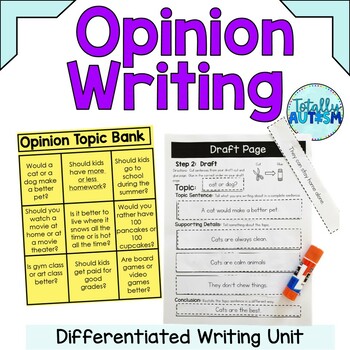
Opinion Writing Anchor Chart | Special Education Writing Curriculum | Persuasive
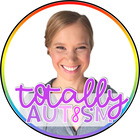
Opinion Writing Unit for Special Education and ESL Students with IEPs

Paragraph Writing Adding Details to Narrative Opinion / SPED & ESL & Reg Ed

Opinion Writing prompts Differentiated Occupational Therapy Special Education
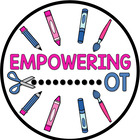
Opinion Writing YEAR LONG Differentiated Occupational Therapy Special Education
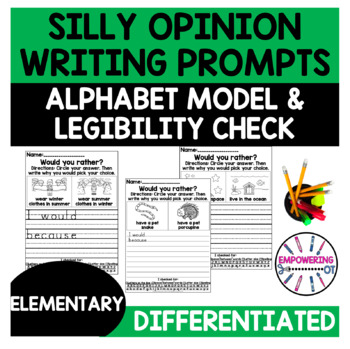
SILLY Opinion Writing prompts Occupational Therapy Special Education
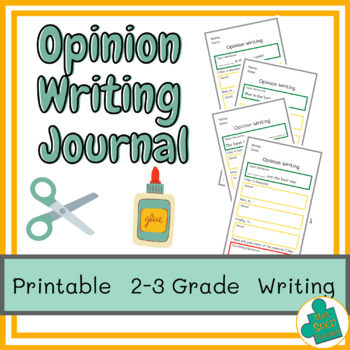
Opinion Writing Journal | For Special Education Classrooms
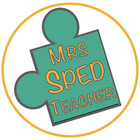
Special Education Writing Prompts and Assessment (3rd-8th)- Opinion /Argumentative

Differentiated Opinion Writing BUNDLE | Special Education | 1st grade- 3rd grade

WINTER Opinion Writing prompts Occupational Therapy Special Education

Water Park vs. Beach: Differentiated Opinion Writing | Sped /Inclusion
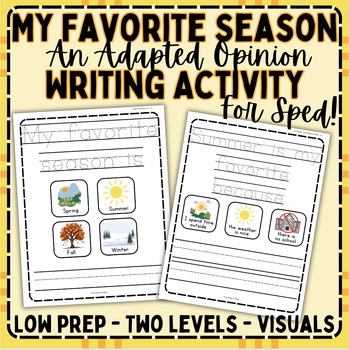
My Favorite Season: Adapted Opinion Writing Project for Special Education or ESL
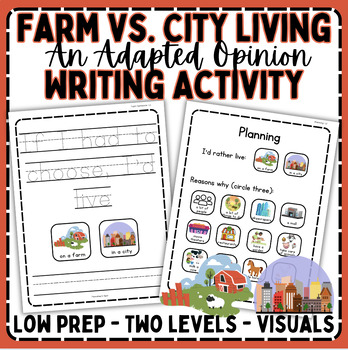
Rural Farm vs. Urban City: Differentiated Opinion Writing | Sped /Inclusion

Oreo Opinion Writing - great for both regular and special ed

Opinion Writing Prompts ( SPED , Differentiated)

Sentence Starters- Sped , Narrative, Opinion Writing
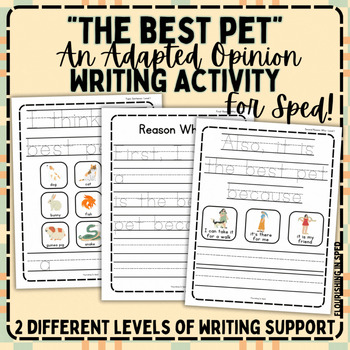
The Best Pet: A Differentiated Adapted OPINION Writing Activity for Special Ed.
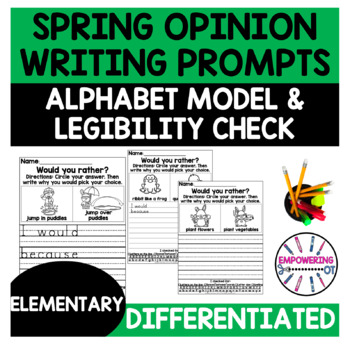
SPRING Opinion Writing prompts Occupational Therapy Special Education

FALL Opinion Writing prompts Occupational Therapy Special Education SPED
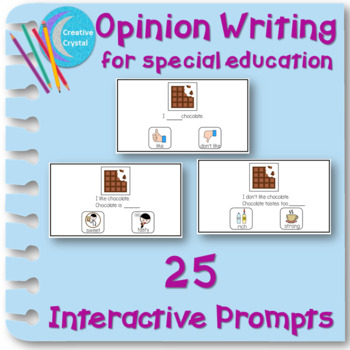
Writing Opinions 25 Prompts Adapted Reading Special Education PDF Google Slides

- Google Apps™
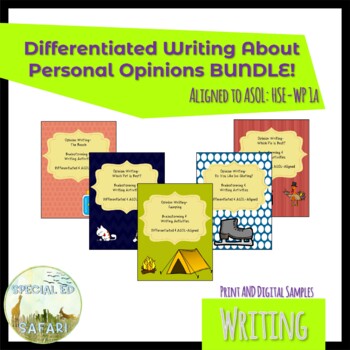
HSE-WP 1a Differentiated Opinion Writing Activities BUNDLE! VAAP and SPED

HSE-WP 1a Differentiated Opinion Writing Activities- Best Pet! VAAP and SPED

Persuasive Writing for Special Ed - Writing Chops: Social Media

Persuasive Writing for Special Ed - Writing Chops: School Uniforms
- We're hiring
- Help & FAQ
- Privacy policy
- Student privacy
- Terms of service
- Tell us what you think

IMAGES
VIDEO
COMMENTS
Russell Gersten, Scott Baker, Lana Edwards. Effective writing instruction for students with disabilities incorporates three components: adhering to a basic framework of planning, writing, and revision; explicitly teaching critical steps in the writing process; and providing feedback guided by the information explicitly taught.
Teaching persuasive writing for special ed students can include scaffolding details from the title to the conclusion. In this article, modifying the persuasive essay for students with learning disabilities can provide a welcome relief to students who enjoy writing, but who aren't sure how to construct their writing.
asserted that writing skills are comprised of four domains: "(1) knowledge of. writing and writing topics, (2) skills for producing and crafting text, (3) processes. for energizing and motivating participants to write with enthusiasm, and (4) directing thoughts and actions through strategies to achieve writing goals".
If they baseline at a higher level we start at that level. For instance, here's how I teach opinion writing in special education: 1- Baseline Data. I take some baseline data and give students the baseline data sheet, or a blank sheet to see where they may be at in the continuum. 2- Start at the Appropriate Level (students love to share their ...
OPINION WRITING CRITERIA TO ADDRESS. 1. Identify the Audience: Speak Clearly. Writing is about language and language is about communication; students should understand that we do not write in a vacuum. The purpose of an essay, letter, or any other form of writing we care to name, is ultimately to be read.
This issue of The Practical Teacher provides an integrated approach to classroom writing instruction designed to accommodate the special needs of disabled writers, as well as those of their non-disabled peers. NASET Members may access this Practical Teacher by Logging in (see Login area to the right). Visitors can access a sample issue by ...
The IFSP is the first support plan that babies and toddlers with special needs receive when eligible for early intervenion services. The major diference between the IFSP and the Individualized Education Program (IEP) is that IFSPs are focused on the family, whereas the IEP is focused on the individual student.
Description. This opinion writing unit is meant to reach your learners on the adapted curriculum and the general curriculum at the same time! Students will learn to generate or choose an opinion, as well as tell the difference between fact and opinion. Students in special education who are non-writers can benefit from this resource.
This opinion writing unit is meant to reach your learners on the adapted curriculum and the general curriculum at the same time! Students will learn to generate or choose an opinion, as well as tell the difference between fact and opinion .Students in special education who are non-writers can benefit from this resource.
This opinion writing unit is meant to reach your learners on the adapted curriculum and the general curriculum at the same time! Students in special education who are non-writers can benefit from this resource. This unit is intended to reach all your special learners with various levels of differentiation and is aligned with Virginia SOL standards.
Tips for writing well in Special Education. Key markers in the field of educational writing include a succinct, yet descriptive title. Also, citation of sources and adherence to the formatting that is included in APA. A paper that is formatted correctly is instantly recognizable. It is important to use the APA manual when writing.
Opinion writing worksheets help your young learner express themselves in complete sentences. With plenty of writing prompts about food, animals, holidays, and more, students take on creative writing in new and fun ways. Created by educators, opinion writing worksheets take the guesswork out of sharing opinions at home or in the classroom.
Item description. This opinion writing unit is meant to reach your learners on the adapted curriculum and the general curriculum at the same time! Students will learn to generate or choose an opinion, as well as tell the difference between fact and opinion. Students in special education who are non-writers can benefit from this resource.
Monica Gonzalez, a special education teacher at Bret Harte Middle School in Hayward, California, said the online platform Google Classroom tends to exacerbate some of the issues faced in classroom instruction. "I still have to figure out how to effectively provide small-group instruction using virtual breakout rooms, yet coordinate and ...
Correcting Facts with Your Written Opinion. Successful IEP meetings require preparation. Be prepared to begin your written opinion during the IEP meeting. At the top of the page write "Written Opinion.". Below that, write "Page 1.". Write your child's name and the date in the top right hand corner of the first page.
with special educational needs for inclusive education as teachers of a general education school [2, 6, 13-16], as well as special educators and psychologists [1, 3, 17].
If four special sessions were called to push for ESAs, a fifth can address special education funding reform. In Texas, 11.7% , or about 700,000 students, rely on special ed teachers to receive ...
Browse opinion writing special education free resources on Teachers Pay Teachers, a marketplace trusted by millions of teachers for original educational resources.
Google Scholar. In accordance with the Federal Law dated 29.12.2012 number 273-FZ (as amended on 02.03.2016.) "On Education in the Russian Federation" inclusive education—ensuring equal access to education for all students, given the diversity of special educational needs and individual possibilities. Google Scholar.
To take our writing seriously, we must think about it as a core part of our life's work. We often write for our peers, sometimes for our students, and sometimes for audiences outside of academia. Once we have confidence in our writing, that paves the way for more outward-facing scholarship, bolstering the possibility of becoming a public scholar.
A writing instructor can spend 30 to 45 minutes grading each draft of a student's work; with 24 students per class, this is a minimum of 12 hours per week grading for one class.
Dr. Kahrl is a professor of history and African American studies at the University of Virginia and the author of "The Black Tax: 150 Years of Theft, Exploitation, and Dispossession in America ...
Perhaps, she responded, because it would be more likely to produce orgasm without risking, you know, death. In my interviews, college students have seen male orgasm as a given; women's is nice ...
Moscow State University of Psychology & Education - the first psychological university and one of the top universities of psychological studies in Russia.. Founded under the initiative of the Moscow Government, the University aims at training highly qualified specialists in the field of education, healthcare and social protection.. As a basic resource center of psychological service, MSUPE ...
Here are some opinion writing Nearpod Slides I used with my 4th grade special education students during synchronous sessions. I recommend sharing your screen in student view to model the "I do" and "we do" slides, and then have kids click back to the Nearpod tab to complete the "you do" slides independently.
Since 2019, the Virginia Board of Education has been under scrutiny by the U.S. Department of Education for a variety of problems in the way it serves special-needs children.
INSPIRE, as a student weighted formula, begins with a clear dollar amount for every student and increases that amount with "weights," or percentage boosts, for students in particular categories.
This adapted, differentiated opinion writing package is perfect for early writers, kindergarten and/or primary writers including students on the Autism Spectrum, students with special education needs and ESL learners.This is perfect for Pre K, Kindergarten or Early Elementary learners. Students will be engaged with the designs and easy to follow format of this independent learning package.
By Svetlana Satchkova. Writer. The news of Alexei Navalny 's death in a prison camp beyond the Arctic circle devastated me. Like countless other Russians, I believed that, someday, my native ...
Browse opinion writing for special education resources on Teachers Pay Teachers, a marketplace trusted by millions of teachers for original educational resources.